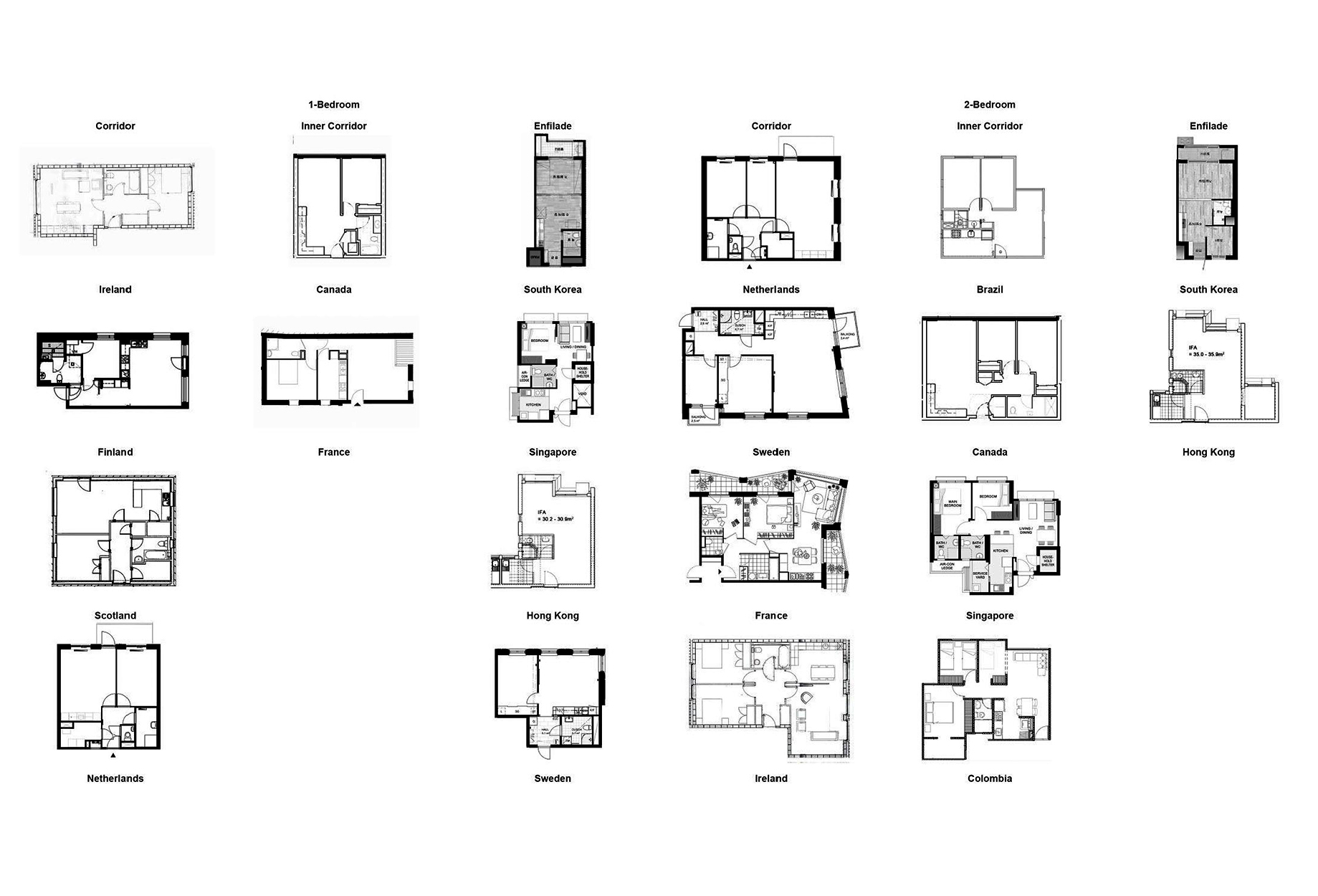Housing Design Guidelines, Regulatory Frameworks, and Policy
Social and public housing is an important part of socioeconomic policy by governments in support of social justice, security, and mobility. While in post-war Europe largely directly controlled by governments, there has been a great shift since the 1980s, leaving its delivery and maintenance to the private sector and increasing homeownership. However, the failure of the market to meet the demands for – now increasingly termed – ‘affordable’ housing is significant. In the UK alone, there is a current backlog of 4.7 million households with housing needs. Across Great Britain, an estimated 340,000 new homes per year are needed.
While there are many political and economic reasons for the perpetual housing crisis in the UK and beyond, the design guidelines, regulatory frameworks, and policy that have led to aspirational but increasingly dysfunctional housing standards play an important part in this failure. This causality is largely ignored by architects, yet essential to understanding the regulatory drivers behind housing design problems. Originally meant to support social ambitions, housing standards quickly became reduced to a quantitative problem and resulted in a housing standardisation that can be easily calculated by governments, developers, and stakeholders. This came at the cost of poor housing design and quality. It also has continued to reinforce nineteenth-century housing typologies conceived for nuclear families, which often no longer meet current housing needs. Little seems to have changed in the spatial reasoning, evidence base, and design of housing despite fundamental changes in household structures and housing expectations. These challenges to future housing design and policy are shared globally.
Team
Sam Jacoby (Principal Investigator)
Alvaro Arancibia (Co-Investigator)
Pilar Urrejola (Researcher)
Seyithan Ozer (Researcher)
Jingru Cheng (Researcher)
Lucia Alonso (Researcher)
Year
2019-2020
Funder
RKEI Development Fund, RCA
Seed Fund, Pontificia Universidad Católica de Chile
Expressed in quantitative terms that commonly regulate floor areas and spatial dimensions, housing standards are contextual to cultural expectations and social ideas of housing that are translated into minimum standards of typical activities at home, which are to be safeguarded. The increasing erosion of the social housing aims is insufficiently studied in the context of design governance and housing outcomes. To explore the impact of quantitative and qualitative standards on housing design, a comparative study of three national contexts (UK, Chile, and China) and an initial international housing design survey is conducted. This compares common quantitative assessment methods used to determine policy and regulatory frameworks and their relationships to qualitative housing standards, design guidelines, and housing needs.
Key observations
- While a historical shift from ‘public’ to ‘social and then ‘affordable’ housing is common in the West, there is no longitudinal study on how this has affected housing design and standardisation or how this compares to housing transformations in other countries.
- European countries in which design standards apply to both subsidised and market housing have larger subsidised housing sectors. However, this is not true for countries with larger subsidised housing sectors elsewhere.
- Subsidised housing is commonly regulated through minimum space standards or standardised plan or block layouts. But even in countries where this is not the case, there is very little variation in housing designs.
- In most countries surveyed, design regulations for subsidised housing are based on quantitative assessment criteria, often defined in terms of minimum floor areas, key dimensions, the number of rooms, and furniture schedules required. This is in contrast to the social role of subsidised housing, which is commonly argued in qualitative terms. Qualitative aims are therefore often disguised and changed by quantitative measures, causing contradictions between housing aims and methods of assessment.
- Housing floor area efficiency is typically achieved by combining functional spaces such as living areas with kitchen, circulation areas with rooms, or by using mobile partitions.
- The definition of housing design and quality from a regulatory perspective often relies on space standards. However, their underlying qualitative assumptions (e.g. household composition and daily routines) and quantitative assessments (floor area and minimum dimensions) are often disconnected from current housing needs.

Graphic standards. Above: Swedish Standards, Building Design-Housing-Interior Dimensions, 2006. Below: Scotland Building Standards Technical Handbook 2017.
Further research
-
The study revealed a large range of unit floor areas designed for the same number of occupants. This raises a question around the different principles of establishing standard or minimum floor areas.
-
There is a significant gap in comparative housing literature on issues of housing design and standardisation. There are also only limited longitudinal studies on their design.
-
There is a serious lack of detailed analysis of qualitative housing aims and whether these can be assessed through quantitative indicators, and how this relationship affects design approaches or processes.
-
There is little understanding of how minimum housing design standards are contextual to a time and place.
-
There is an urgency to provide a solid evidence base for the benefits of high-quality housing design.

Incremental row housing typology, Santiago de Chile (2009-2013)
Outputs
Housing Standardisation: Design Guidelines, Regulatory Frameworks, and Policy (2019). Workshop held at the RCA. 21st October.
Modelos comparados de vivienda: políticas y marcos normativos de diseño en el Reino Unido, China y Chile (2019). Symposium held at the Pontificia Universidad Católica de Chile. 29th November.
Ozer, S. & Jacoby, S. (2022). The design of subsidised housing: Towards an interdisciplinary and cross-national research agenda. Housing Studies, 39, 1–26.
Jacoby, S., Arancibia, A. & Alonso, L. (2022). Space standards and housing design: Typological experimentation in England and Chile. The Journal of Architecture.

